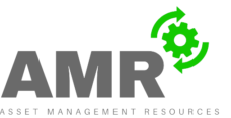Let Your Organisation Reap the Benefits of a Fixed Asset Audit
This article on our blog briefly covers the organisational benefits of conducting a fixed asset audit.
What is a fixed asset audit?
A fixed asset audit is a verification process to reconcile an organisation’s official asset listing to actual assets physically located during the audit process. Fixed asset audits may involve the below considerations:
1. Determining the scope of the fixed asset audit
2. Acquiring a comprehensive list of all your assets
3. Establishing the goals of the fixed asset audit exercise
4. Reviewing and accounting for inconsistencies revealed by the audit
How does my organisation benefit?
The value of fixed asset audits can be taken into consideration with the risks present in the management of fixed assets, some of which are outlined below:
- Incorrect depreciation rate and depreciation calculation based on an inaccurate asset listing.
- The reporting of fixed assets that are non-existent on-the-ground (lost assets).
- The non-registration of newly purchased assets that leaves open the possibility of losing track of these assets.
- The possibility of missing assets when there are insufficient controls (e.g. such as insufficient documentation) to track and manage these assets’ movements such as possession, transfers and disposal.
- Inaccurately paying insurance risk premiums based on outdated asset information.
- Service maintenance contracts do not accurately account for the quantity of assets on premise, the condition of assets on premise.
Fixed asset audits therefore provide accurate and updated information on an organisation’s asset base, upon which crucial decisions can be made by managing parties. Fixed asset audits help organisations to develop a single, verified source of asset information. With regular fixed asset audits, organisations can make spending adjustments and shift to the proactive management of fixed assets.
